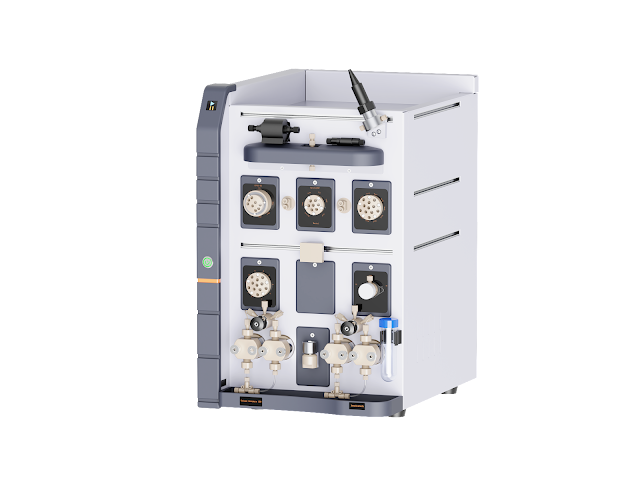Unraveling Complex Mixtures: The Power of Liquid Chromatography and Fast Protein Liquid Chromatography
Imagine the ability to separate, identify, and quantify each component in a complex mixture with precision and speed. This is the remarkable capability of liquid chromatography (LC) and its specialized form, fast protein liquid chromatography (FPLC). These techniques are indispensable in scientific research and various industries, from pharmaceuticals to environmental monitoring. This article delves into the significance of liquid chromatography and FPLC, exploring their applications, advantages, and impact on modern science.

Understanding Liquid Chromatography
One flexible analytical method for separating, identifying, and quantifying components in a mixture is liquid chromatography. It involves passing a liquid sample through a column packed with a stationary phase while a mobile phase flows through it. The different components of the sample interact with the stationary phase to varying degrees, leading to their separation as they travel through the column.
The ability to precisely control the separation process makes liquid chromatography invaluable for analyzing complex mixtures in pharmaceuticals, environmental science, food safety, and more. It provides high sensitivity and resolution, allowing for the detailed analysis of compounds that are often indistinguishable by other methods.
The Process of Liquid Chromatography
In liquid chromatography, the sample is injected into a column containing a stationary phase, usually made of silica particles. The mobile phase, a liquid solvent, carries the sample through the column. As the components of the sample interact with the stationary phase, they are separated based on their chemical properties, such as polarity and molecular size.
The separated components elute from the column at different times and are detected by various types of detectors, such as UV-Vis, fluorescence, or mass spectrometry. This process allows for the identification and quantification of each component in the mixture, providing valuable data for research and quality control.
Applications of Liquid Chromatography
Liquid chromatography is used in a wide range of applications. In the pharmaceutical industry, it is essential for drug development and quality control, ensuring that medications are safe and effective. Environmental scientists use liquid chromatography to detect and quantify pollutants in water, soil, and air, helping to protect public health and the environment.
In the food industry, liquid chromatography ensures the safety and quality of products by detecting contaminants and verifying ingredient composition. Additionally, it plays a crucial role in clinical diagnostics, helping to identify biomarkers for diseases and monitor therapeutic drug levels.
Introduction to Fast Protein Liquid Chromatography
The Fast protein liquid chromatography (FPLC) is a specialized type of liquid chromatography designed specifically for the purification of proteins. FPLC systems are optimized to handle the delicate nature of proteins, ensuring their activity and stability during the purification process. This technique is widely used in biochemistry and molecular biology for isolating and studying proteins.
FPLC utilizes high-performance pumps and sophisticated control systems to achieve precise and reproducible separations. It often employs gradient elution, where the composition of the mobile phase changes over time to improve separation efficiency and resolution.
The Process of Fast Protein Liquid Chromatography
In fast protein liquid chromatography, the sample containing the target protein is loaded onto a column packed with a stationary phase tailored to protein separation. The mobile phase, typically a buffer solution, flows through the column, separating the proteins based on their size, charge, or affinity for specific ligands.
The separated proteins are detected and collected at different times, allowing for the isolation of pure proteins. This purified protein can then be used for various downstream applications, such as structural analysis, functional studies, and therapeutic development.
Applications of Fast Protein Liquid Chromatography
Fast protein liquid chromatography is crucial in the production of biopharmaceuticals, including monoclonal antibodies, vaccines, and therapeutic proteins. It ensures that these products are of high purity and quality, meeting stringent regulatory standards. In academic research, FPLC enables the study of protein structure and function, contributing to our understanding of biological processes and disease mechanisms.
Moreover, FPLC is used in the development of diagnostic tools and assays, providing insights into protein interactions and biomarker discovery. Its precision and efficiency make it an invaluable tool in both basic and applied research.

Conclusion
The techniques of liquid chromatography and fast protein liquid chromatography are vital to advancing scientific research and industrial applications. They enable the detailed analysis and purification of complex mixtures, driving innovations in pharmaceuticals, environmental science, and biotechnology. For those seeking high-quality equipment and expert guidance in these fields, Inscinstech.com.cn offers a comprehensive range of LC and FPLC systems. By visiting Inscinstech.com.cn, researchers can access the tools necessary to achieve precise and reliable results in their scientific endeavors.
.jpg)

Comments
Post a Comment